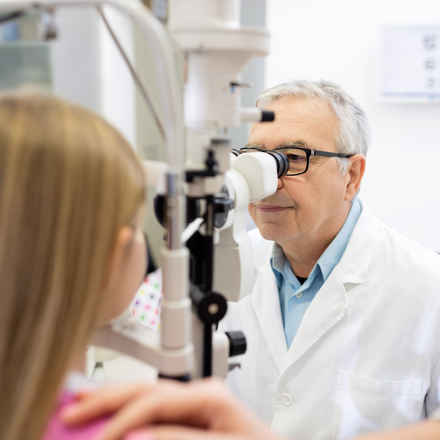Workforce Census illustrates severe shortage of eye doctors
Posted: Friday 31 March 2023
This page can be viewed in Welsh.
The Macular Society has reacted with concern to The Royal College of Ophthalmologist’s 2022 Workforce Census, which reveals the shortage of eye doctors in the UK and the extent of pressure on NHS ophthalmology services.
The report highlights the overwhelming staff shortages faced by NHS ophthalmology services, showing over three quarters of eye clinics (76%) do not have enough consultants to meet current patient demand, and more than half (52%) have found it more difficult to recruit consultants over the last 12 months.
The ophthalmology staff shortages are affecting patients across the UK, with over 632,000 people with different eye conditions on the waiting lists in England alone, 24,000 of which are waiting for over a year. Impacts on patient care are a growing concern and more than half of eye clinics in England are estimating it will take at least another year to clear their outpatient backlogs.
To cope with increased patient demand these clinics are relying more heavily on locums, with 65% now using them to fill consultant vacancies, with 57% of these using locums to fill posts for longer than 12 months.
Cathy Yelf, chief executive of the Macular Society, said: “The results from the 2022 Workforce Census are extremely concerning, for both patients and staff, but they don’t come as a surprise. It is clear the system is no longer working and patients’ sight is being put at risk. Urgent action is required. The Macular Society, along with other members of The Eyes Have It partnership, has been calling for a national eye care strategy which will help address some of these issues and improve care and outcomes for everyone.”
The report also highlights how workforce shortages are only set to worsen for ophthalmology services, with a quarter of consultants planning to leave the workforce within the next five years, the majority of which will be retiring. Another 28% of the workforce is planning to leave the NHS to work in independent sector providers – an increase from 16% of the workforce currently.
Although the use of independent sector providers has helped to tackle the cataract backlog, the report indicates that a majority of eye clinics believe these providers are having a negative impact on patient care and ophthalmology services in their area.
Over three-quarters (76%) of eye clinics cite funding for additional posts as a barrier to further increasing the capacity of non-medical professionals working in their unit.
Commenting on the report, professor Bernie Chang, president of the Royal College of Ophthalmologists, said: "It is vital that we have appropriate workforce capacity in place for the coming years, at consultant and SAS grades, as well as non-medical roles that are part of the wider eye care team such as nurses, orthoptists, optometrists and ophthalmic technicians. There must be greater coordination at the national and regional level to ensure patients will benefit, without destabilising existing NHS eye units.”
RCOphth is calling on policymakers across the UK to act on the workforce shortages with urgency. They are urging policymakers to commit to a phased increase in ophthalmology training places, develop an eye care workforce plan, commission independent sector capacity intelligently, explore simpler routes for Specialty and Associate Specialist (SAS) doctors and ensure that ophthalmology units are properly resourced to meet patient needs.
If you are experiencing delays at your local eye clinic, we are here to help. Call us on 0300 3030 111.
Get the latest news and advice from the Macular Society
To hear about life-changing research, treatments and tips for living with sight loss, subscribe to our monthly enewsletter today. Together we can Beat Macular Disease.
Sign up to our free email newsletter
